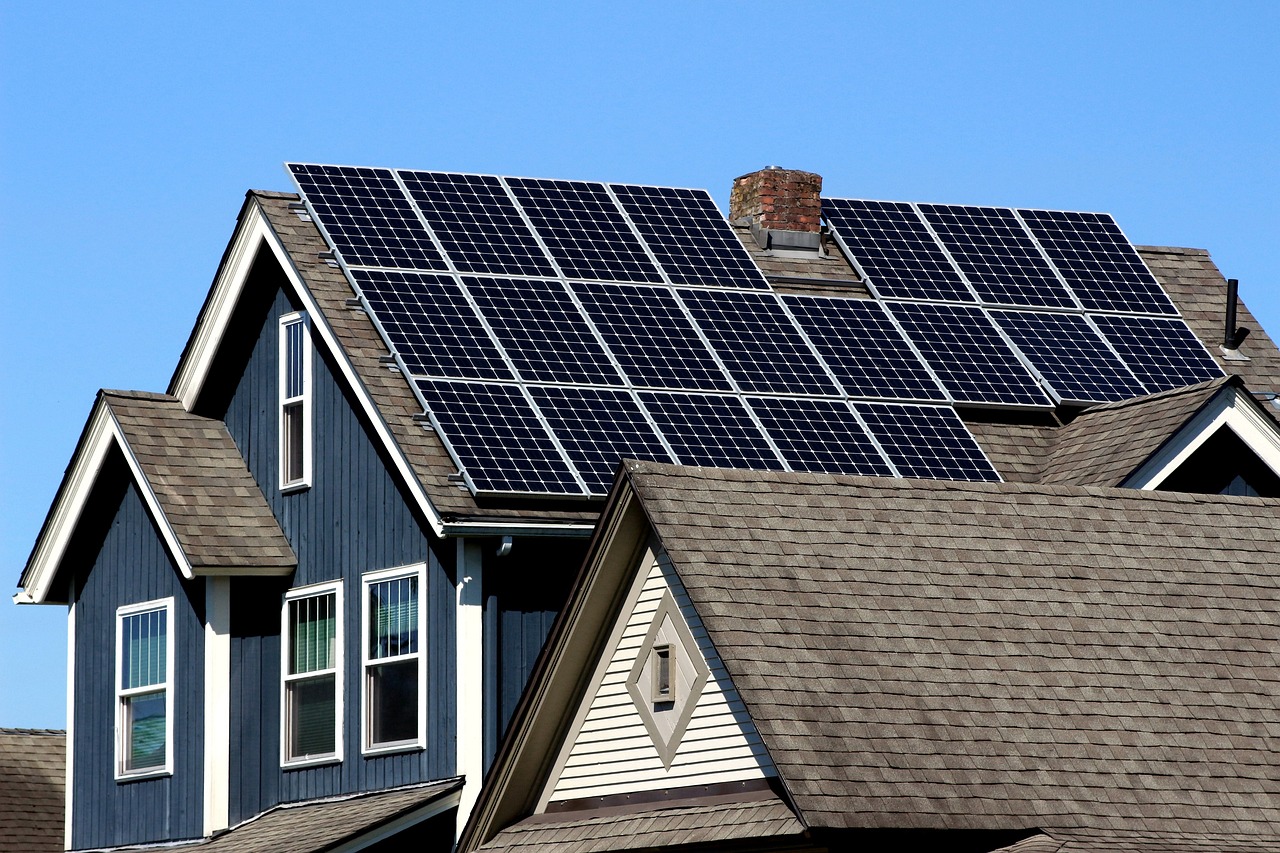We have reviewed and researched most of available Solar Generator in the market. From the result, we can say the Jackery Solar Generator 2000 Plus is overall best solar generators for home backup.
Best Solar Generators for Home Backup: Jackery Solar Generator 2000 Plus (Best Overall)

Jackery Solar Generator 2000 Plus stands out as an excellent choice for home backup due to its remarkable expandability.
The base unit provides a substantial 2042.8Wh (2kWh) capacity, suitable for powering essential devices for a few hours.
For even greater needs, its modular design allows the unit to be linked to additional Battery Pack 2000 Plus in parallel, expanding the total capacity to an impressive 24kWh, providing days of backup power for critical home appliances during extended outages.
This scalability ensures that the system can adapt to varying power demands and durations of blackouts, making it a future-proof solution for home energy security for you.
In terms of power output, the Jackery Solar Generator 2000 Plus delivers a robust 3000W continuous AC output with a 6000W surge capacity.
This high power capability enables it to run a wide range of household appliances for you, from refrigerators and lights to medical devices and even power tools.
The inclusion of multiple AC outlets, including a dedicated 25A outlet for higher-power devices, along with various USB and DC ports, ensures compatibility with virtually all essential electronics for you.
The near-instantaneous Uninterruptible Power Supply (EPS) feature, with a switchover time of under 20ms, further enhances its suitability for home backup by seamlessly keeping sensitive electronics operational without interruption for you.
The advanced LiFePO4 battery technology at the core of the Jackery Solar Generator 2000 Plus offers significant advantages for home backup for you. LiFePO4 batteries are renowned for their safety, long lifespan, and stability.
With the ability to maintain 70%+ capacity after 4,000 charge cycles and an expected lifespan of up to 10 years, the generator provides a reliable long-term backup solution for you.
Moreover, the generator offers versatile charging capabilities, including rapid solar charging that can fully replenish the unit in as little as 2 hours using solar panels with 6 Solar Saga 200W, providing energy independence for you.
AC charging also allows for quick recharging from the grid when power is available to you.
This combination of safe, long-lasting battery technology and flexible charging options ensures the Jackery Solar Generator 2000 Plus is always ready to provide reliable home backup power for you.
Best Solar Generators For Home Backup: Top 4 Contenders
Best Small: Jackery Solar Generator 1000 Plus
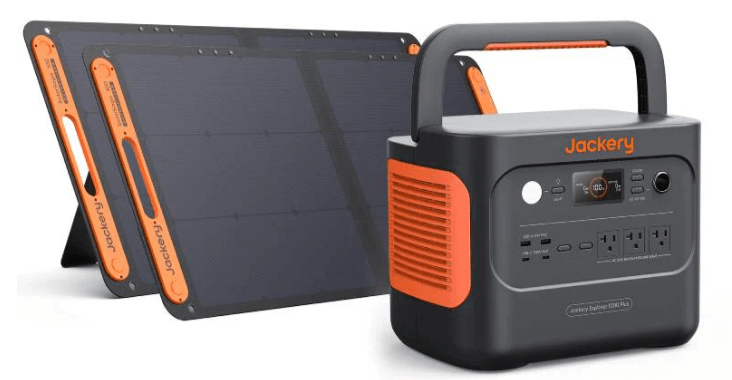
The Jackery Solar Generator 1000 Plus is a compelling choice for small home backup due to its balance of power, battery capacity, and charging flexibility. Its 2000W rated power (4000W surge) is sufficient to run essential appliances like refrigerators, lighting, and small medical devices.
While not intended for whole-house backup, it capably supports critical circuits or rooms during outages. The three 120V AC outlets provide enough connections for multiple devices.
This makes it a practical solution for maintaining basic functionality and comfort in a small home during short to medium-duration power interruptions.
The 1000 Plus utilizes LiFePO4 battery technology, which is a significant advantage for home backup. LiFePO4 batteries are known for their safety, long lifespan (4000 cycles to 70%+ capacity), and thermal stability. This ensures that the Jackery 1000 Plus can reliably provide power over many years of use, a crucial factor for a backup system. The 1264Wh capacity offers a decent reserve for essential loads, and the system’s expandability with up to three additional battery packs allows you to increase capacity to 5kWh as your needs grow.
Charging the Jackery Solar Generator 1000 Plus is both fast and flexible. Ultra-fast wall charging replenishes the unit in just 1.7 hours, ensuring it’s quickly ready after an outage. Fast solar charging, using compatible solar panels, can fully charge it in as little as 2 hours, offering a renewable energy source for prolonged outages or off-grid scenarios.
Car charging provides another option, though slower. Pass-through charging allows you to power devices while the unit itself is charging, further enhancing its utility as a reliable home backup solution.
Best Unlimited Expandable Power: Nature’s Generator Powerhouse
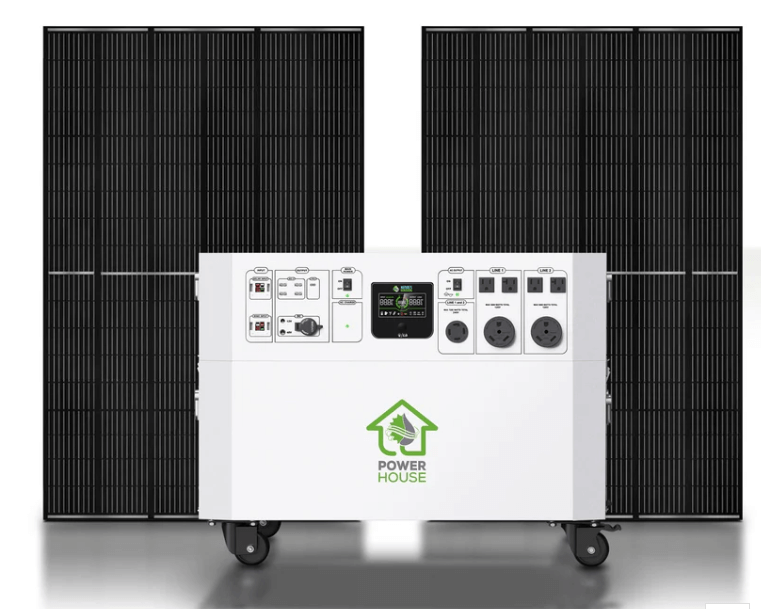
The Nature’s Generator Powerhouse distinguishes itself as a premier choice for unlimited power upgrades primarily due to its unique “Infinite Expandability” feature.
Unlike many solar generators with fixed or limited expansion options, the Powerhouse allows you to add an unlimited number of Powerhouse Power Pods. Each Power Pod contributes an additional 4800Wh of battery capacity, effectively removing any ceiling on the total energy storage you can achieve.
Each Power Pod increases the solar input capacity by an additional 2000W and wind input by 1000W. This parallel increase in both storage and charging potential is vital for a truly scalable system. As you add more battery capacity, you can also proportionally increase your renewable energy input, ensuring that you can efficiently replenish the expanded storage.
The inclusion of a powerful 1300W AC charger also provides a rapid and reliable method for recharging from the grid when needed, further contributing to the system’s adaptability for continuous power availability, regardless of the scale of your setup
Complementing its exceptional expandability is the robust power output of the Nature’s Generator Powerhouse. With a peak output of 7200 Watts and a diverse array of AC outlets, including two 120V 30A, one 240V 30A (split phase), and multiple standard 120V outlets, it can simultaneously power a wide range of demanding appliances and equipment.
The inclusion of a 240V outlet is particularly significant, enabling the operation of high-power devices like well pumps, certain HVAC systems, and heavy-duty machinery, which are often beyond the capability of other portable power stations.
Best Large Solar Generator: Jackery Solar Geberator 5000 Plus
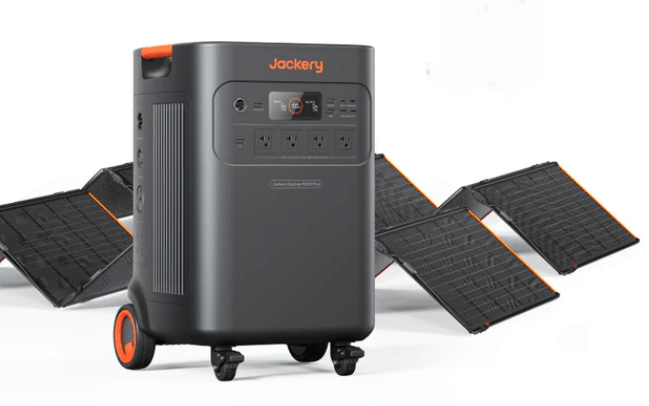
Best Full Whole Home Backup: MyGrid 10K Whole Home Generator
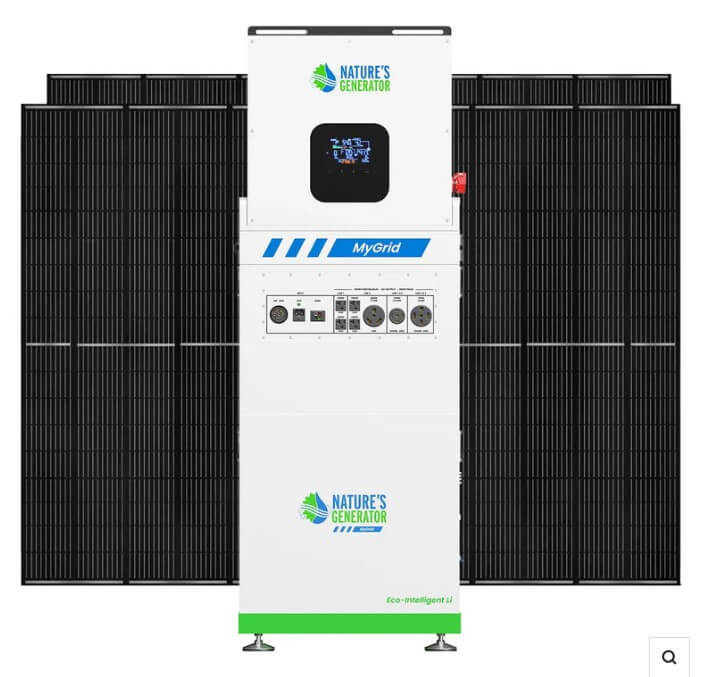
The Nature’s Generator MyGrid 10K Whole Home Generator excels as a premier whole-home backup solution due to its robust expandability. Its design allows for the seamless addition of extra battery capacity and solar panels, ensuring that as your energy needs evolve, your backup system can readily adapt.
Furthermore, the ability to combine two MyGrid 10K units to achieve a total power output of 20kW provides a significant advantage for larger homes or those with substantial power demands, offering a truly scalable solution. This future-proofs your investment, allowing you to initially cater to essential loads and incrementally expand the system’s capabilities to cover the entire home without requiring a complete system overhaul.
In terms of power output, the MyGrid 10K delivers a substantial 10kW of continuous power with a 20kW peak, making it capable of running a wide array of household appliances simultaneously
The crucial inclusion of both 120V and 240V split-phase output allows it to power high-demand appliances like HVAC systems, well pumps, electric stoves, and even EV chargers, which are often beyond the capacity of smaller backup generators.
This capability ensures that during a power outage, you can maintain a comfortable and functional living environment, running essential and even some non-essential appliances without significant compromises. The multiple outlet options further enhance its versatility, accommodating various power cord types and requirements throughout your home.
The MyGrid 10K utilizes a high-capacity 10.496 kWh Lithium Iron Phosphate (LiFePO4) battery, renowned for its long lifespan of approximately 6,000 charge cycles and an expected lifespan of up to 10 years. This superior battery technology offers reliable and long-term energy storage for extended power outages.
What to look for when searching for Best Solar Generator for Home Backup
When selecting the best solar generator for home backup, understanding key features such as power output, battery capacity, and charging options is crucial.
The power output defines how much wattage your solar-powered generator can supply at any given moment.
This will ultimately dictate what appliances you can run during a power outage—be it a refrigerator that requires around 150-200 watts or a few lights that might only need 10-15 watts each.
Ideally, you’ll want a generator with sufficient wattage to cover your basic needs without strain.
Battery capacity plays an equally significant role in evaluating potential solar generators. Measured in watt-hours (Wh), this gives you an idea of how long you can run various appliances off the stored energy.
A higher capacity means longer use without needing to charge from solar panels or AC outlets.
Depending on your daily consumption habits, picking a model with sufficient battery life may mean the difference between enduring a blackout comfortably and scrambling for candles.
| Tips to determine capacity needed. Assume you need to turn ON: – A 60W television for 6hours – A 30W fan for 6hours – A 22W lamp for 6hours The calculation of capacity you required (at least): (60×6) x (30×6) x (22×6) = 672Wh |
Power output is another important consideration; this refers to how many devices you can run simultaneously and includes peak versus continuous output measurements.
The peak output represents the maximum burst of power that can be sent out momentarily, while continuous output shows what’s sustainable over time.
A solar generator with high continuous output ensures you won’t inadvertently trip any circuit breakers when powering multiple devices.
Charging time can vary significantly between models and directly impacts usability during emergencies.
If you’re considering a portable power station, finding one that recharges quickly from either wall outlets or solar panels means less downtime in case of an unforeseen event.
Charging options are another critical factor worthy of examination. Top-rated models typically offer several ways to recharge their batteries—via solar panels, wall outlets, or even car ports—which provides flexibility based on your circumstances and availability of sunlight.
Models that support fast charging can help users quickly replenish their systems after use, enhancing efficiency during emergencies or outdoor adventures.
Portability becomes pivotal here; lightweight and compact designs make transporting these power stations easier whether you’re camping off-grid or preparing supplies for an emergency kit.
Portability also plays a significant role in choosing the right solar generator. If you’re an outdoor adventurer or live in an area prone to blackouts, you’ll want a lightweight option that’s easy to transport.
Look for features such as sturdy handles or roller wheels in units designed for mobility—this way, embracing portable power becomes hassle-free!
Some generators even come with foldable portable solar panels that make it simpler to gather energy while on the go.
A solar transfer switch is an important part of a solar energy system. It helps switch between using electricity from the solar panels and electricity from the power grid.
This switch makes sure that when there’s a power outage, electricity doesn’t flow back into the solar system, keeping everything safe.
Also, it enables the electrical system of the building to accept the power of a solar generator.
Hence, you can you home appliance as usual without the need to move the solar generator.
Overall, this device helps make your solar energy system work better and gives homeowners confidence in using renewable energy.
Lastly, expandability and additional features can significantly enhance your experience with a solar generator.
Many of today’s models allow users to couple several units together, creating an expandable system that grows alongside their needs—ideal for those transitioning into off-grid living or requiring higher outputs over time.
Features like multiple AC ports and USB-C inputs offer versatility in powering different appliances and devices simultaneously.
For instance, if you aim to run not just essentials but also electronics for entertainment during long outages, having multiple output options ensures seamless integration of all items you need to power up.
This, however, can be overcome by using transfer switch.
Do note for battery life cycles, it refers to the number of complete charge and discharge cycles a battery can undergo before its performance significantly deteriorates.
Example, if a 1000Wh capacity life cycle is 3000 cycles to 80% capacity, it means after a completed 3000 of charge and discharge cycles, the maximum battery capacity will be 80% of original capacity, which is at 800Wh.
Conclusion: Your Path to Reliable Home Power
Choosing the best solar generator for your home backup needs provides numerous advantages. Solar generators offer a clean, renewable energy source that ensures power is available during emergencies such as power outages.
Don’t let another blackout leave you powerless; secure your home’s energy independence with the best solar generator on the market. Take action today to ensure your family stays safe and connected, even when the grid goes down. Supplies are limited, so act now to transform uncertainty into unstoppable reliability—before it’s too late!
Love to read, explore and write about Science, Mathematics and Technology.
The name “Newton” coming from how I love Science.
